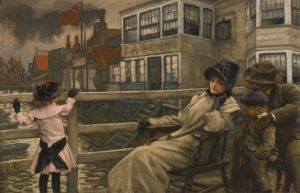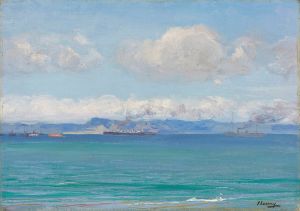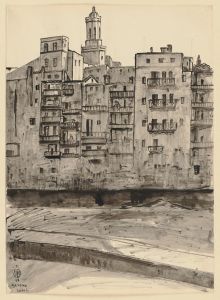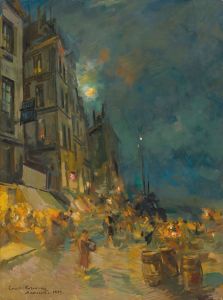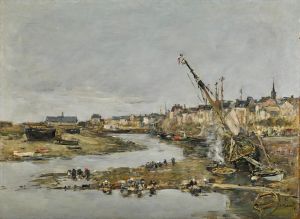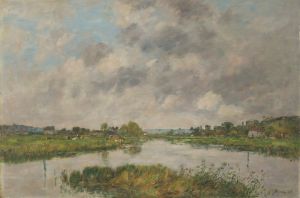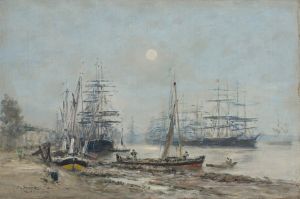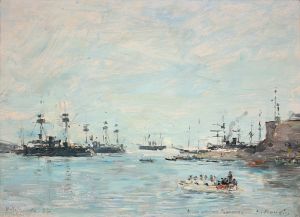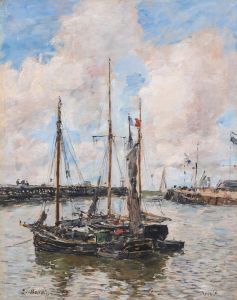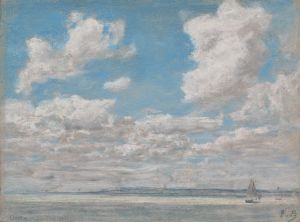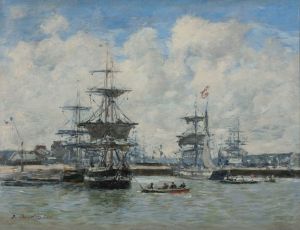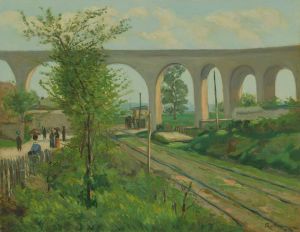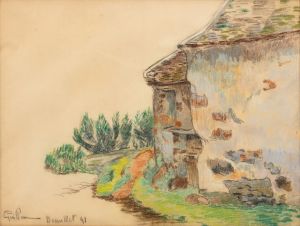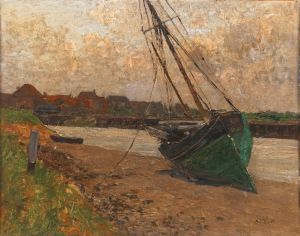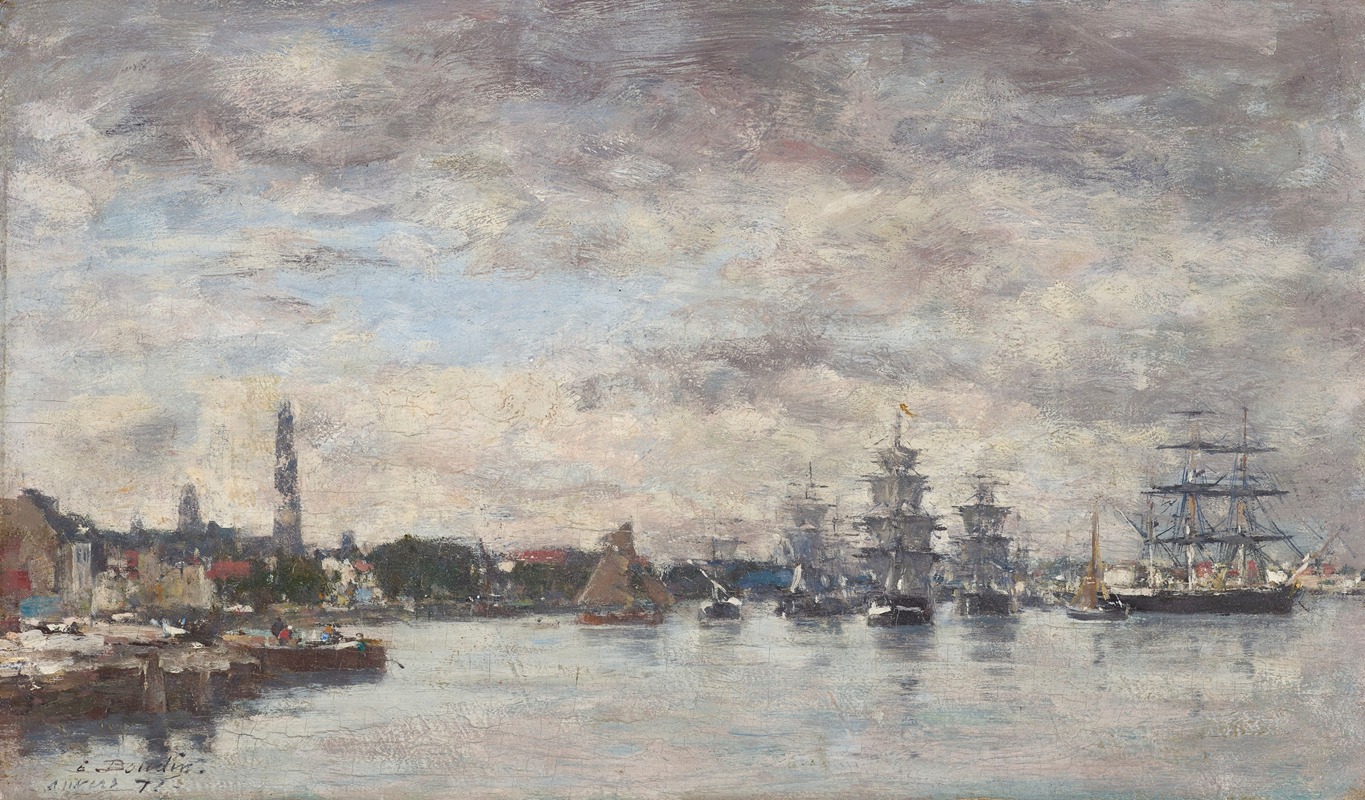
Anvers, bateaux sur l’escaut
A hand-painted replica of Eugène Boudin’s masterpiece Anvers, bateaux sur l’escaut, meticulously crafted by professional artists to capture the true essence of the original. Each piece is created with museum-quality canvas and rare mineral pigments, carefully painted by experienced artists with delicate brushstrokes and rich, layered colors to perfectly recreate the texture of the original artwork. Unlike machine-printed reproductions, this hand-painted version brings the painting to life, infused with the artist’s emotions and skill in every stroke. Whether for personal collection or home decoration, it instantly elevates the artistic atmosphere of any space.
"Anvers, bateaux sur l’Escaut" (Antwerp, Boats on the Scheldt) is a painting by the French artist Eugène Boudin, who is renowned for his seascapes and beach scenes. Boudin, born on July 12, 1824, in Honfleur, France, is often considered one of the precursors to the Impressionist movement. His work is characterized by his ability to capture the transient effects of light and atmosphere, particularly in coastal settings.
This particular painting, "Anvers, bateaux sur l’Escaut," depicts a scene on the Scheldt River in Antwerp, Belgium. Antwerp, a significant port city, has long been a hub of maritime activity, and the Scheldt River is a vital waterway that connects the city to the North Sea. Boudin's choice of this location underscores his fascination with ports and harbors, which were frequent subjects in his oeuvre.
The painting showcases Boudin's skill in rendering the interplay of light and water. The boats on the Scheldt are depicted with a keen eye for detail, yet the overall composition maintains a sense of fluidity and movement. The sky, a crucial element in Boudin's works, is painted with soft, diffused light, suggesting either an early morning or late afternoon setting. This use of light not only enhances the realism of the scene but also imbues it with a serene and contemplative mood.
Boudin's technique involves loose, rapid brushstrokes that capture the essence of the scene without becoming overly detailed. This approach allows viewers to experience the atmosphere of the port and the gentle movement of the boats on the water. The color palette is typically muted, with shades of blue, grey, and white dominating the canvas, reflecting the natural tones of the maritime environment.
Eugène Boudin's influence on the Impressionist movement is significant. He was a mentor to Claude Monet, who once referred to Boudin as his "master." Boudin's emphasis on painting en plein air (outdoors) and his focus on capturing the fleeting effects of light were techniques that would become central to the Impressionist style. Although Boudin himself is often categorized as a pre-Impressionist, his work laid the groundwork for many of the innovations that the Impressionists would later develop.
"Anvers, bateaux sur l’Escaut" is a testament to Boudin's mastery of maritime scenes and his ability to convey the quiet beauty of everyday life along the coast. The painting is part of Boudin's extensive body of work that includes numerous depictions of ports, beaches, and coastal towns across France and beyond. His works are held in high regard and can be found in major art museums around the world, including the Musée d'Orsay in Paris and the National Gallery of Art in Washington, D.C.
In summary, "Anvers, bateaux sur l’Escaut" exemplifies Eugène Boudin's talent for capturing the essence of maritime life through his adept use of light, color, and composition. The painting not only reflects the artist's personal style but also his significant contribution to the development of modern art.





